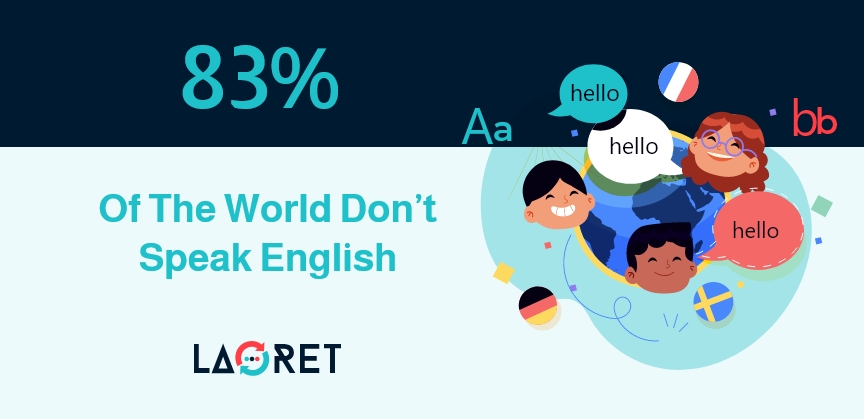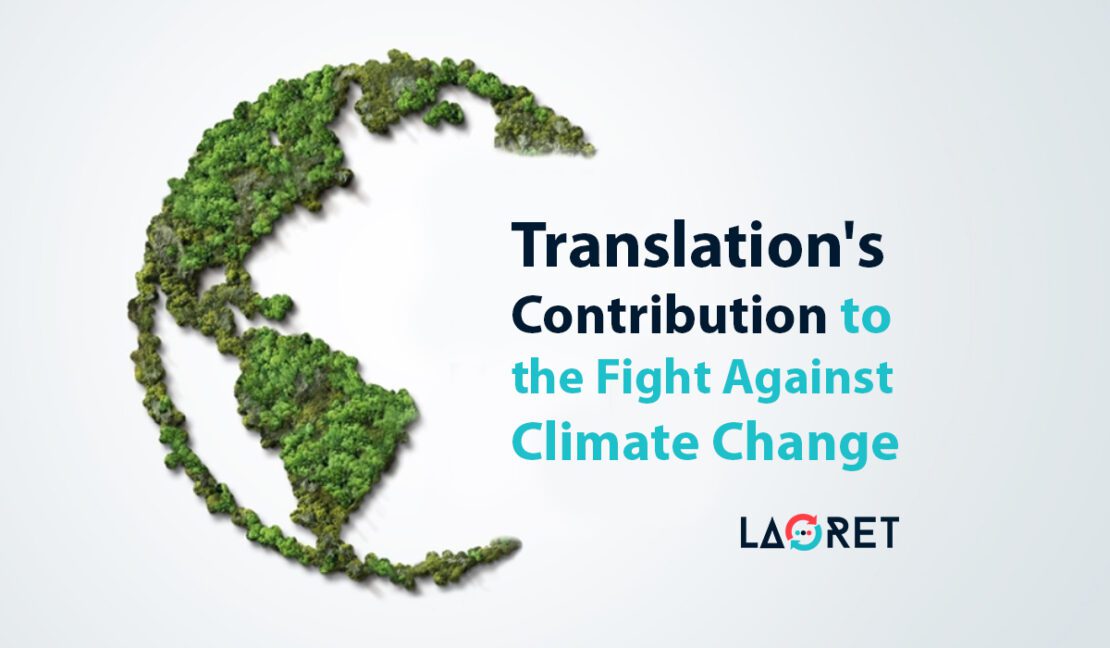Translation’s Contribution to the Fight Against Climate Change
In Sharm El-Sheikh, Egypt, the Conference of the Parties (COP 27) of the UNFCCC is holding its 27th meeting. This is the most recent global effort to respond to climate change and build a more sustainable future. But it’s also a reminder that with climate change being a real threat to our world as it is, the language barrier is posing an additional challenge to it, possibly hindering any effort to fight it.
If you are an NGO, a research and advocacy organization, or an enterprise that actively contributes to climate change mitigation, this article sheds light on the impact of language and translation on your climate change communications and maximizing your global efforts against climate change and global warming. This article also provides you with a few tips to help get your message across and make your voice heard.
Language Barriers: Getting Lost WITHOUT Translation
As humans, we frequently presume that animals think and communicate similarly to us. This issue also pertains to how we communicate with other humans. We frequently believe that others “speak our language”, while in reality, we all communicate the very same thing in very diverse ways.
And the conversation around climate change is no exception.
Language barriers have long been both a concern and a limitation. Globalization may have contributed to some degree to breaking down these barriers, but apparently not as significantly as you may think.
Add climate change to the equation, and the language barrier is more evident. It can come between any attempts to raise awareness and promote understanding, collaborations between governments and communities, get funding, or take impactful climate-relevant action.
When it comes to climate change, it’s a conversation between both developing and developed countries and it’s a conversation of global equality and equity. But for effective communication and real change to happen, different NGOs and governments around the world have come to the conclusion that language access is imperative.
You must shape the climate catastrophe into an accessible and personal issue in order for there to be engagement with the subject and, by extension, action.
The only way to address the climate disaster is for you to convince as many people as possible that it is the most critical subject of our time. And, because communication and appropriate language are the most important tools for that, everyone should prioritize language access.
The majority of scientific material, for instance, is written in English, creating a frightening information gap for the 83% of the world’s population who do not speak it. That’s a major issue for climate change, because it’s difficult to take action on something you don’t comprehend.

What we have here is a communication breakdown. Because the vocabulary around climate change is challenging, it seems to people as a completely abstract subject; words become obstacles rather than aids, and this uncertainty becomes a deterrent to care.
Communication of the climate catastrophe is most effective in the target audience’s mother tongue. You need to deliver information to people in their own native languages when sharing the implications of climate change and seek to propose solutions to mitigate global warming and climate change at a grassroots level as well as with policymakers.
While language constraints continue to stymie any real progress and development, you would be surprised at the strides you will make if you integrate translation into your efforts. When you speak the same language, people can really come together to see things from different perspectives and voice their opinions, eventually finding climate change a common ground and a universal experience that requires a solid collaborative effort and international climate action.
No, English isn’t Enough
English might still be the lingua franca that dominates global scientific activities and research, from scientific publications to databases, which is a serious issue because, as previously mentioned, the majority of the world’s population does not speak English.

At some point, this huge amount of research and resources on climate change will have to be available in other languages, including rare or minor languages for their speakers to read and eventually take part in the fight.
On a local level, on the other hand, many scientists and users of scientific information, such as policymakers and leaders, communicate in languages other than English on a regular basis, making science produced in languages other than English often get unread and unnoticed and inevitably creating barriers to knowledge transmission between communities.
In reality, disregarding non-English science may have more serious effects than simply lacking access to existing material. It can lead to biases and gaps and may also impede global responses to pandemics, biodiversity loss, and climate change.
Again, this is where language access and translation can save the day. The research and data landscape isn’t ideal in terms of language, but you can always choose not to limit your English-only or non-English work. Translating your work into different languages opens up a world of opportunities to reach a wider audience and achieve a bigger impact.
Perhaps the international treaty, The Paris Agreement is one of the most remarkable translation efforts in the climate change arena. The Paris Climate Agreement is available in the six official languages of the United Nations: Arabic, Chinese, English, French, Russian and Spanish.
Translation and Localization: Next Steps Towards Inclusion
Now that you recognize the role of translation and language to keep the conversation going and help fight climate change, here are a few tips to help you get started.
1. Consider What Languages to Translate Into
You don’t have to translate to all languages at once. This decision should be a combination of your objectives and the target audience you seek to approach.
You might want to consider the official languages of the UN, for starters. For a wider reach, you may also consider the most spoken languages around the world.

2. Implement A Holistic Translation Strategy
Here are the types of content that you should consider translation and localization for.
- Documents: This includes official statements, research and study, news…etc.
- Digital Content: This includes platforms, websites, apps, audiovisual content, etc. If you are taking your efforts to the digital sphere, then you are doing it right. But this only means a more global audience that needs to understand you, and so you’ll need to speak their language.
- Events, Conferences, and On-the-ground Humanitarian Initiatives: For these, you’ll need an expert interpreting team that can support you in as many languages as you need. Especially with humanitarian activities in developing countries in Asia and Africa, you’ll need interpreters specialized in less common or marginalized languages.
With work with indigenous communities in the Amazon, for example, many of the native languages lack a single phrase to represent forest snakes and frogs. That is why language interpreters are vital. With that in mind, it is obvious that you will need the help of an expert translation provider to consult and provide professional and effective multilingual communications across these types of different content.
Translation and Climate Change Go Together
The journey to a more promising, sustainable future starts with effective communication. And the first basic thing about communication is language. Climate change is universal, but languages aren’t. That’s why individuals and organizations should be open to reaching out to each other in different languages. Translation has long been a means to bridge languages and cultures, but more to bring people together, and today with climate change, this has never been more pressing.
Laoret offers a full array of translation and localization services, conforming to international ISO standards and confidentiality policies. Check out our services and get a free quote for your translation project now.






